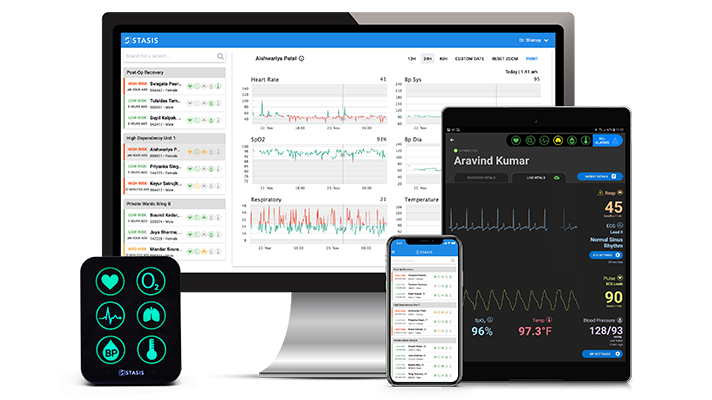 Digital health technology is revolutionizing the healthcare industry in many ways. One such innovation is remote patient monitoring (RPM) platforms that allow patients to measure and track their vital signs and health conditions from the comfort of their homes. remote patient monitoring platform are transforming healthcare delivery by enabling clinicians to remotely collect and monitor real-time data, thereby improving patient outcomes and lowering healthcare costs. In this blog post, we’ll explore the rise of remote patient monitoring platforms and the benefits they offer to patients and healthcare providers.
Digital health technology is revolutionizing the healthcare industry in many ways. One such innovation is remote patient monitoring (RPM) platforms that allow patients to measure and track their vital signs and health conditions from the comfort of their homes. remote patient monitoring platform are transforming healthcare delivery by enabling clinicians to remotely collect and monitor real-time data, thereby improving patient outcomes and lowering healthcare costs. In this blog post, we’ll explore the rise of remote patient monitoring platforms and the benefits they offer to patients and healthcare providers.
What is Remote Patient Monitoring (RPM)?
Remote patient monitoring is a healthcare technology that allows clinicians to monitor patients’ health conditions and vital signs remotely using smart sensors, wearables, and mobile apps. The RPM system collects and analyzes real-time patient data, and sends the information to healthcare providers who can monitor their patients and take appropriate actions when necessary. RPM platforms have been used in various healthcare settings, including chronic disease management, post-acute care, and acute care.
The Benefits of RPM for Patients
Remote patient monitoring has several benefits for patients, including convenience, cost-effectiveness, and improved outcomes. By using RPM, patients can receive personalized care at home and avoid frequent hospital visits. RPM platforms make it easier for patients to manage their health conditions by providing real-time data and feedback. RPM also enhances patient engagement in their healthcare, leading to better health outcomes, and lower costs associated with hospital readmissions and emergency room visits.
The Benefits of RPM for Healthcare Providers
RPM platforms provide healthcare providers with several benefits, including better engagement with patients, lower healthcare costs, and more efficient use of resources. Providers can remotely monitor their patients, identify potential issues early, and intervene as necessary, leading to better health outcomes and lower healthcare costs. RPM also allows providers to deliver tailored care to patients, reducing the risk of complications and improving the quality of care.
The Impact of RPM on Chronic Disease Management
Chronic disease management is one of the areas where RPM platforms have had a significant impact. RPM has been used in the management of chronic conditions such as diabetes, hypertension, and cardiovascular diseases. By leveraging real-time data and analytics, RPM platforms help clinicians identify potential problems early and intervene as necessary. This results in better disease management, reduced hospitalizations, and improved patient outcomes. RPM has also been shown to reduce healthcare costs associated with chronic disease management.
The Future of RPM
The future of remote patient monitoring is promising, with the potential for even more advanced technologies and applications. RPM platforms will likely become more intuitive and user-friendly, leading to increased patient engagement and adoption. There will also be more opportunities for integration between RPM and other healthcare technologies, such as electronic medical records and telemedicine. As RPM continues to evolve, it will likely play an even more significant role in improving healthcare delivery and patient outcomes.
Conclusion:
The rise of remote patient monitoring platforms is revolutionizing healthcare delivery and improving patient outcomes. RPM offers several benefits to both patients and healthcare providers, including convenience, cost-effectiveness, and better outcomes. The widespread adoption of RPM will lead to a more efficient and effective healthcare system that is better equipped to meet the needs of patients. As RPM continues to evolve, it will change the way patients interact with healthcare providers, improving patient engagement and creating an environment where patient-centered care is the norm. So, let us embrace remote patient monitoring and lead the way towards a healthier future.



